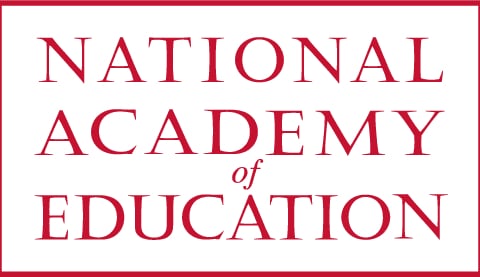We were deeply saddened to learn of the passing of David P. Gardner on January 2, 2024. Below is a tribute to his life and career by Deseret News (source).
David Pierpont Gardner, the 10th president of the University of Utah and a renowned national education leader, died Tuesday of a lingering, undisclosed illness. He was 90 years old.
Gardner served as U. president from 1973 to 1983 and led the university through a period of significant progress and growth.
According to a statement from the U., Gardner is credited with elevating the academic excellence and prominence of the university and strengthening its status as a major research institution. He was a widely recognized thought leader and expert on education. He advocated for improving American public schools and making undergraduate education a national priority.
“President David Gardner was the visionary leader the University of Utah needed at a time of significant growth,” said U. President Taylor Randall in a statement.
“On his watch, our admissions standards increased, our research enterprise was strengthened, the university’s budget more than doubled, and our hospital and medical school grew,” Randall said.
Gardner was considered a diplomatic advocate for the university and its students. He was recognized for his commitment to excellence and for being a powerful voice of education in the state of Utah and the rest of the country, according to the U. statement.
“He pushed us to do better, to be better,” Randall said. “His vision and passion helped lay the groundwork for the university to become the top-tier research institution that it is today.”
In the epilogue to his 2005 memoir, “Earning My Degree: Memoirs of an American University President,” Gardner listed several experiences he treasured. Among them was “the lights of the great ‘U’ on the mountain rising east of the University of Utah campus, lit for a game and then blinking in victory or steady in defeat.”
Gardner was born and raised in Berkeley, California. He earned a bachelor’s degree in political science, history and geography from Brigham Young University. He received a master’s degree in political science and a doctorate in higher education from UC Berkeley. His dissertation, “The California Oath Controversy,” earned acclaim for its portrayal of the controversy that rocked the University of California from 1949-52.
Gardner began his professional career as assistant chancellor at UC Santa Barbara, where he also held a faculty appointment in education. In 1969, he was appointed vice chancellor-executive assistant at Santa Barbara and associate professor of higher education. He is credited with playing a key role in keeping communications open during campus riots in 1970.
While at UC Berkeley’s Center for Studies in Higher Education, Gardner outlined his guiding principles: freedom to learn, the unhindered pursuit of truth and a life committed to academic freedom.
“The university is not engaged in making ideas safe for students. It is engaged in making students safe for ideas. Thus, it permits the freest expression of views before students, trusting to their good sense in passing judgment on these views,” said Gardner, quoting Clark Kerr, the first chancellor of UC Berkeley.
Gardner was appointed president of the University of Utah in 1973. He was committed to improving the academic excellence of the university and led initiatives to establish more rigorous admissions requirements.
A major focus of his decadelong administration was to expand the U.’s research efforts. He raised the university’s budget from $102 million to $264 million and increased faculty salaries significantly, making the U. competitive with the nation’s top research universities.
He also led efforts to secure $50 million in state and private funds to expand the U.’s hospital and medical school. Enrollment in health sciences programs grew and major medical breakthroughs, including the first artificial heart, occurred during his tenure. Income from patents and commercial licenses on inventions from university faculty grew to millions of dollars.
Gardner gained national recognition as an expert on higher education, publishing dozens of books, articles and reports throughout his career.
In 1970, he was asked to testify before President Richard Nixon’s Commission on Campus Unrest, where he recommended that undergraduate education be placed nearer the top of national educational priorities.
In 1974, a Time magazine article named Gardner one of the 200 men and women “destined to provide the United States with a new generation of leadership.”
While serving as U. president, Gardner chaired the Department of Education’s Commission on Excellence in Education, which authored the landmark 1983 report “A Nation at Risk,” which sparked a national effort to reform America’s public schools.
Gardner left the University of Utah in 1983 to lead the nine-campus University of California system. Upon his departure, Gardner Hall on President’s Circle was renamed in his honor. The concert hall within the same building was named in honor of his wife, Libby Gardner, after she passed away in 1991.
Gardner served as UC president from 1983-1992 and is credited with strengthening the system’s financial base. He successfully campaigned for a permanent 32% increase in state funding, allowing the university to raise faculty salaries and undertake several new initiatives. He helped secure public and private funding for a $3.7-billion building program.
During his tenure, the University of California increased admissions requirements and improved academic standards. Enrollment rose by 25,500 to 166,500. In response to a projected 60,000 additional students by 2005, Gardner proposed a tenth campus. UC Merced was completed after his departure.
After serving as UC president, Gardner presided over the William and Flora Hewlett Foundation from 1993 to 1999, and was chairman of the board of the J. Paul Getty Trust from 2000 to 2004. He was a member of the National Academy of Education and the American Philosophical Society and a fellow of the American Academy of Arts and Sciences and the National Academy of Public Administration.
